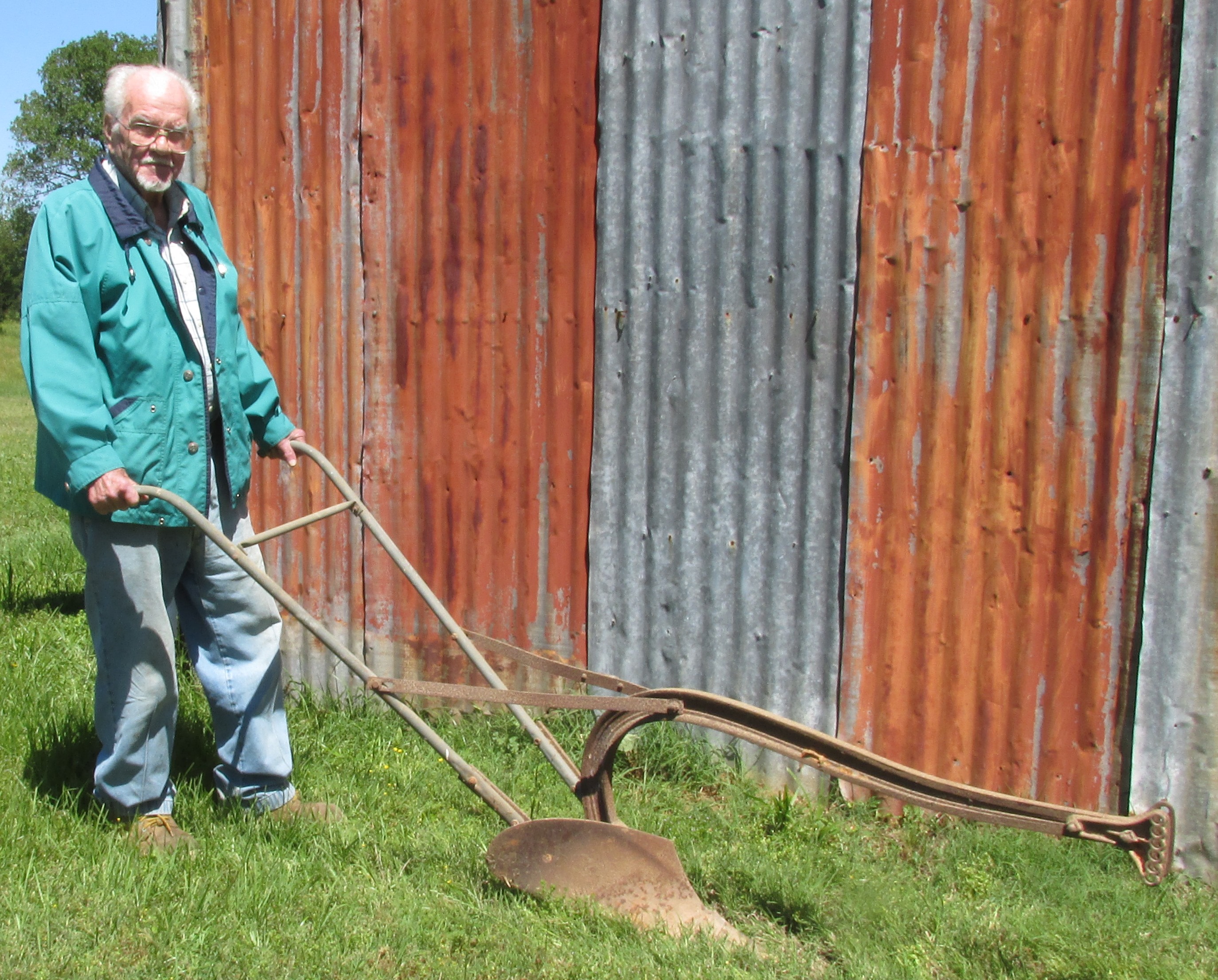Old Plows and Tractors
by Deborah Burkett
What do deer antlers, bison scapula, Hussey Hard Metal, Wood Beam Rollover, Blue Kelley, Farmall and Massey-Harris Pony have in common?
They all have been used to break ground, ready the soil for planting.
Antlers and bison scapula (shoulder blades) were attached to sticks and fashioned into rakes and hoes by the Caddo Indians and other Native American tribes.
In the early 1800s, American farmers broke the soil with an all-wooden plow. Steel points were added in Thomas Jefferson's day. Then in the 1830s, John Deere introduced the all-metal "prairie breaker" plow.
Some twenty years later, John A. Stewart began to make plows in a machine shop located near Marshall and the result was a major East Texas industry.
By 1852, Stewart had a partner, George Kelly, who eventually took control of the East Texas business and sold the overwhelming popular--Kelly Blue Plow.*
One hundred years later, as a young girl spending the summers in the Mixon community with my grandparents, Willie and Viola Langston, I saw many family farms. Plows and tractors were everywhere. My grandfather, used a horse named Blanche to plow and sometimes attached a slide to bring home watermelons from the bottom.
Other farmers used tractors to cut hay. Square bales were produced and teenage boys hauled the hay for extra money.
And many a youngster learned to drive a car by first maneuvering the family tractor.
Daily Progress Editor, April Barbe, learned how to drive a car using an old blue Ford tractor, "My Daddy probably wanted me to learn to drive the tractor so I could help out with the family garden, but I kept running all of the gas out driving through our pastures! I guess I wasn't much help in the garden, but it did provide me with my first driving experience."
Researching and interviewing individuals for this story led to memories of a by-gone era. John Wilson, born December 30, 1929, told of the impact the Great Depression had on his family and the last cotton plowed on Pea Ridge in 1954.
Wilson shared, "One wagon load of cotton could weigh 1,500 pounds before it was ginned and it produced only one bale of cotton weighing about 500 pounds, after the cotton seeds were gone…During the Depression we had acres of cotton… My dad also grew a lot of peas and President Roosevelt sent him a "pea check". Dad did what the government said…"
Note: Roosevelt's New Deal Program stated that one of every four rows of cotton was to be plowed up and replanted with a row of speckled peas. This qualified farmers for an annual "pea check" which was much needed in the economic crisis of the Great Depression.
Over the years, John Wilson would continue to farm while working full time as a maintenance machinist at Nichols in Jacksonville.
According to Wilson, "The last time my wife and I farmed was in early 1960s. We were offered 75 cents a bushel for our tomatoes. We sold bell peppers to Child's Warehouse for 50 cents a bushel…There are no guarantees with farming…It's mostly up to the Lord what kind of yield you'll get…One year, we didn't get enough peas, beans or tomatoes to make a bowl of soup!"
For some time now, the number of family farms has greatly declined; old farm equipment no longer needed. Consequently many of these relics have been rusting away in barns, lost in overgrown pastures or just sitting on the side of the road with a for-sale sign attached.
Such is the case with two tractors at J P Auto in Rusk. The one belonging to Mike Johnson is a late 1940s International Farmall. It's for sale.
The other is nicknamed the FrankenFord-after the Frankenstein monster. It's not for sale. This 1952 Ford tractor has been "tricked out" or modified over the years by owner Jerry Parker. Currently the tractor has the front end of a Buick, a Chevy motor V6, the gas tank is out of a 1929 speed boat and the steering wheel is from a Cadillac!
In closing, it's safe to say old plows and tractors have found new purposes. They're sought after by antique collectors everywhere. And it's become common for high school graduates and newlyweds to ask photographers to take their picture with rusty farm equipment. Wonder what their ancestors would think? I can just image them saying, "You young people, get off that tractor, crank it up and go to work!"
But I believe this renewed interest in old farm implements is a good thing. As the modern Ag industry expands and changes, it's important to save these old plows and tractors and by doing so, we're preserving memories of family farming--the way it used to be.
(*Source: Archie P. McDonald, Ph.D. "History of the Kelly Plow")

John Wilson